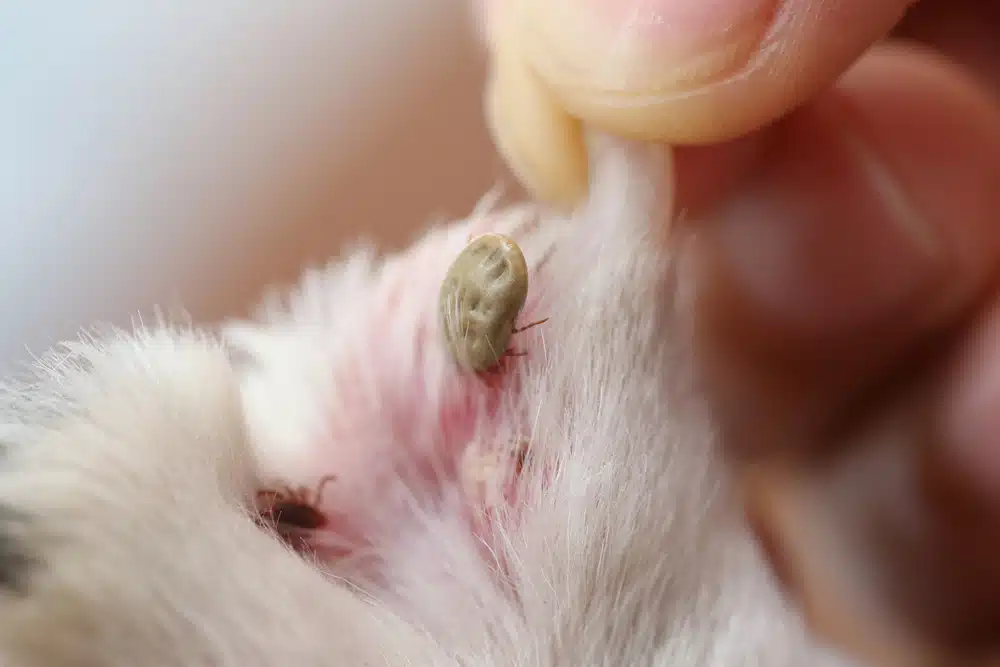Are you itching for the facts about fleas and ticks and how they affect your pets in Colorado? Our veterinary team at Pets & Friends Animal Hospital hopes you’re not itching too badly, but you should be concerned about the variety of these pesky critters that live here and put your dog or cat at risk for a variety of unpleasant diseases.
Colorado has some of the greatest numbers of flea and tick species in the country—approximately 80 flea species and 27 tick species that mostly inhabit higher elevations. Both parasites feed on your pets’ blood and infect them with serious diseases, some of which can affect humans. While April through November is typically Colorado’s flea and tick season, cats and dogs need year-round protection, with no lapses in their prevention medication, so one of these pests does not have an opening to infect your pet.
Diseases spread by fleas
Fleas can spread a variety of serious diseases, which include:
- Murine (flea-borne) typhus — Fortunately, this disease usually does not affect dogs or cats, but cats can transmit the disease to humans, who do get sick.
- Bartonella (cat scratch disease) — This disease is usually transmitted to humans when an infected cat scratches.
- Mycoplasma haemofelis and haemocanis — These parasitic bacterial diseases in cats and dogs, respectively, are transmitted when fleas bite your pet and can cause anemia.
- Plague — If not treated promptly with antibiotics, this terrible disease can cause serious illness or death. Dogs are less susceptible than cats.
- Tapeworms — Pets who accidentally swallow an infected flea, often when grooming, can acquire these parasites. They also can be transmitted to humans the same way, but they seldom cause serious harm.
- Flea allergy dermatitis (FAD) — This extremely itchy condition is an allergic reaction to a protein in a flea’s saliva.
- Anemia — Blood loss because of a severe flea infestation can make kittens and puppies seriously anemic, and they may die.
Diseases spread by ticks
Tick-borne diseases that can affect your pets and sometimes humans, include:
- Lyme disease — Dogs can become seriously ill with this disease that causes numerous symptoms, including lameness, joint swelling and pain, fatigue, and appetite loss, and can progress to kidney disease, which can be fatal.
- Canine ehrlichiosis — Fever, poor appetite, weight loss, and bleeding disorders are some of the signs of this tick-borne disease. Dogs need prompt treatment for the best outcome.
- Cytauxzoonosis — A Lone Star tick that bites your cat can cause this severe disease that results in a fever as high as 106°F. Cytauxzoonosis can be fatal.
- Rocky Mountain spotted fever (RMSF) — RMSF is transmitted by fleas and ticks and can infect dogs and occasionally cats. Its many unpleasant symptoms include joint and abdominal pain, fever, coughing, swollen face and legs, and poor appetite, but antibiotics can cure the disease.
- Anaplasmosis — The black-legged tick carries the bacteria that cause this disease in dogs. Signs are similar to Lyme disease.
- Babesiosis — Multiple tick species can infect a dog with this disease. Signs include fever, lethargy, lack of appetite, and swollen joints and abdomen.
Prevention includes annual testing and medication

Now you know some of the many awful diseases caused by fleas and ticks, you can understand the importance of your cat or dog being checked and tested annually by your veterinarian, which can take place during your pet’s annual wellness exam.
Various tests can screen for Lyme disease, anaplasmosis, and ehrlichiosis, and preventives come in several formulations, including:
- Injectable medication — A 12-month injection of preventive medication for your dog or a six-month shot for your cat is the most foolproof way to protect pets, since you don’t need to remember to apply a product every month
- Topical treatments — These are liquids that you apply directly to your pet’s skin in places they cannot reach, such as between the shoulders, at the base of the neck, or along the back.
- Oral medications — Many pets prefer these flavorful, chewable tablets or pills that kill fleas and ticks when they suck your pet’s blood.
- Collars — Pet collars, which slowly release ingredients that repel and kill fleas and ticks, are not particularly effective used alone but can complement other preventives.
To completely eliminate flea infestations, you also need to treat your home. Thoroughly clean your pet’s bedding and carpets to reduce the indoor flea population, ensuring you use pet-safe products. Our team can recommend flea-control products that are effective and safe.
You also need to treat your yard to eliminate outdoor fleas that could end up inside your home. Clean up leaf litter and debris, and use a nontoxic spray solution, which your veterinarian or an exterminator can recommend.
Flea infestations are extremely difficult to eradicate, and you may need to hire a professional exterminator.
To prevent tick bites, avoid strolling with your pet through tall grass and brush that ticks like to inhabit. If you do walk in the woods together, check your dog for ticks as soon as you return home. Remove any that you find and dispose of them immediately.
Remember, you don’t need to start from scratch when it comes to flea and tick prevention and control. Contact us at Pets & Friends Animal Hospital for more information about keeping your four-legged buddies flea- and tick-free and safe from the serious diseases these pests can cause.

